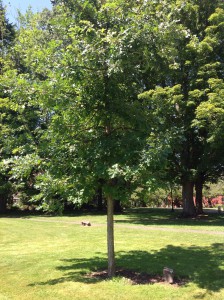Genus: Quercus
Family: Fagaceae
“Mighty oaks from little acorns grow,” and Reed has several mighty oaks. Many of our species were chosen specifically for their fall colors. Oaks are among the most useful and important native trees of the United States.
Black Oak
Scientific name: Quercus velutina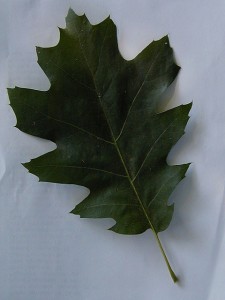
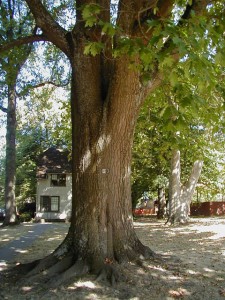 This tree reaches 50 to 60 feet in height, and the spread is variable. The crown is often quite irregular: it can be narrow or wide-spreading, elongated or rounded. The leaves are shiny dark green in the summer, turning a beautiful red in the fall. They are large with 7 to 11 pointed lobes. It is a tree native from Maine to Florida, west to Minnesota and Texas. One of the black oaks on the Reed campus has been designated a Portland Heritage Tree.
This tree reaches 50 to 60 feet in height, and the spread is variable. The crown is often quite irregular: it can be narrow or wide-spreading, elongated or rounded. The leaves are shiny dark green in the summer, turning a beautiful red in the fall. They are large with 7 to 11 pointed lobes. It is a tree native from Maine to Florida, west to Minnesota and Texas. One of the black oaks on the Reed campus has been designated a Portland Heritage Tree.
View tree page and map.Burr Oak
Scientific name: Quercus macrocarpaNorthern Red Oak
Scientific name: Quercus rubra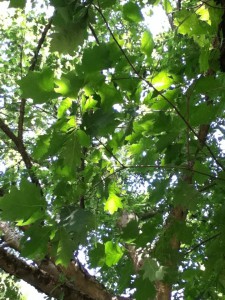
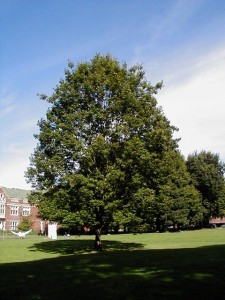 The Northern Red Oak is native to the entire eastern half of the United States except the deep South. It grows to as much as 75 feet in height. Leaves are a dark green in the summer, and they turn red in the fall.
The Northern Red Oak is native to the entire eastern half of the United States except the deep South. It grows to as much as 75 feet in height. Leaves are a dark green in the summer, and they turn red in the fall.
View tree page and map.Oregon White Oak
Scientific name: Quercus garryana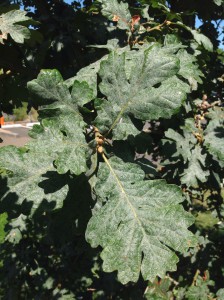
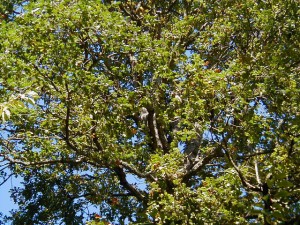 Also known as the Garry Oak, this tree's typically gnarled branches produce a beautiful, rounded outline in winter. It can easily live to 500 years. Leaves are dark green, and the autumn color is usually light brown. The Oregon White Oak is the most abundant and widely distributed oak in Oregon, and it is the only native oak found in eastern Oregon. The famous botanist David Douglas discovered this tree and named it for his friend Nicholas Garry of the Hudson's Bay Company.
Also known as the Garry Oak, this tree's typically gnarled branches produce a beautiful, rounded outline in winter. It can easily live to 500 years. Leaves are dark green, and the autumn color is usually light brown. The Oregon White Oak is the most abundant and widely distributed oak in Oregon, and it is the only native oak found in eastern Oregon. The famous botanist David Douglas discovered this tree and named it for his friend Nicholas Garry of the Hudson's Bay Company.
View tree page and map.Pin Oak
Scientific name: Quercus palustris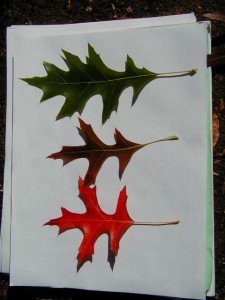
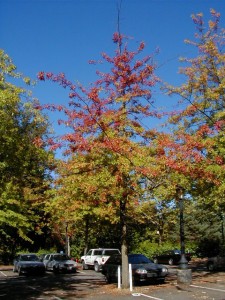 A deciduous oak native to central and eastern U.S., it has moderate to fairly rapid growth to 80-100 feet. It has a slender and pyramidal form when young, open and round-headed at maturity. Lower branches tend to droop almost to the ground, but frequently they are cut off. Glossy, dark green leaves, with deep sinuses and bristle-pointed lobes, have brown tufts of hair on the underside near the veins. Foliage turns to a showy scarlet in the fall.
A deciduous oak native to central and eastern U.S., it has moderate to fairly rapid growth to 80-100 feet. It has a slender and pyramidal form when young, open and round-headed at maturity. Lower branches tend to droop almost to the ground, but frequently they are cut off. Glossy, dark green leaves, with deep sinuses and bristle-pointed lobes, have brown tufts of hair on the underside near the veins. Foliage turns to a showy scarlet in the fall.
View tree page and map.Scarlet Oak
Scientific name: Quercus coccinea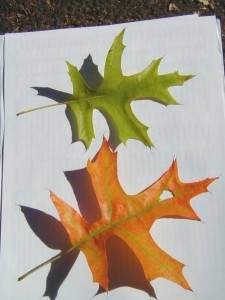
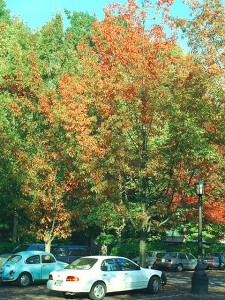 The Scarlet Oak grows 70 to 75 feet in height by 40 to 50 feet in width and as much as 100 feet in the wild. Foliage is a glossy dark green in summer, changing to scarlet in the fall, with 5-7 bristle tipped lobes. Native range extends from Maine to Florida, west to Minnesota and Arizona. This tree needs full sun and good drainage to do well.
The Scarlet Oak grows 70 to 75 feet in height by 40 to 50 feet in width and as much as 100 feet in the wild. Foliage is a glossy dark green in summer, changing to scarlet in the fall, with 5-7 bristle tipped lobes. Native range extends from Maine to Florida, west to Minnesota and Arizona. This tree needs full sun and good drainage to do well.
View tree page and map.

